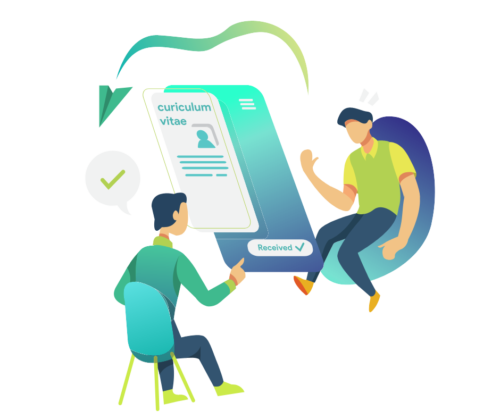
VR (Virtual Reality) in HR is quite natural now. It has been getting ultimately popular these days for many reasons. But a few years ago, this wasn’t the case. It was an escapable expense for many companies, and for a few privileged companies, it was accessible. The other reasons why VR was unpopular then were –
- Shortage of supply
- Their usage in gaming and entertainment was also less.
On the contrary, one of the IT giants, Accenture, co-created 60,000 VR headsets with the utility company, Oculus for training its new hires.
Fact #1: Accenture was the company to get such a large number of VR headsets from a single company.
In October 2021, Bank of America launched a virtual reality (VR) training program in 4,300 financial centers.
Fact #2: Bank of America is in the industry to launch a VR training program.
In 2017, the British carmaker, Jaguar, made an unlikely collaboration with English virtual band Gorillaz – a mixed reality app for recruitment. And it made its first hire (the first successful code-breaker) in the same year in a tech fest. After all, the company wants top-notch talent, so there couldn’t be a better bet.
Today many companies such as Deloitte, PwC, Toyota, Accenture, AT&T, Delta Airlines, BMW, and Walmart use AR and VR in recruitment – specifically to hire new talent and train them.
Elevating Recruitment Experience with AI
According to Gartner, 90 percent of HR leaders plan to maintain or increase their investment in technology. Nearly 30% are finding how AI technology trends such as AR (augmented reality), VR (virtual reality), and mixed reality will impact the talent acquisition process.
These technologies have changed the HR game drastically by making it powerful for them to hire talent. VR and AR have gone mainstream now, and many companies are slowly adapting them.
Let’s see how these buzzing AR and VR trends benefit your recruitment and employee management process.
5 Ways AR and VR Technologies Impact your HR and Recruiting Process
1. Target Advertising
Target advertising is the best way to attract the right candidates who are likely to apply for the job and show up for the interview. Unlike traditional job ads, AI-based AR or VR job ads inspire and draw the attention of people who wants to work with a company like yours. Thus it saves you a lot of time and effort.
2. Resume Search Filters
Artificial Intelligence alone can make the hiring process easier, faster, and more precise. Nothing is more overwhelming than screening loads of resumes to fill one or two positions. Integrated resume search or database filters can eliminate hectic tasks. Applicant tracking software like Vultus has resume harvesting and resume search tools that search qualified resumes from various job boards and own databases – thus saving tons of time for recruiters.
Not only does AI automate job matching, but it makes unbiased decisions and protects the candidate database.

3. Virtual Office Tours
Working from home has become a norm globally for a couple of years, and this trend is not going anywhere. However, remote hiring and onboarding is still a daunting task for a few companies. While recruitment software like Vultus makes remote hiring easy, Virtual reality makes remote onboarding feel real. Virtual workplace tours take the onboarding experience of your new remote hires next level by walking them through the office and the workflow.
4. Gamification in Recruiting
Gamification in recruitment is an effective method to recruit candidates in a fun and engaging way. Unlike regular hiring processes, candidates are asked to solve puzzles or crack codes as part of the application and assessment tests. You can also include behavioral, psychological, or personality tests to determine if the candidate matches your organizational culture. Not only gamification in recruitment makes the process fun, but it also brings you the most potential candidates.
5. Employee Training & Engagement
A PwC study found that VR learners are 4X faster to train than in the classroom and 275% more confident to apply skills learned after training. These people are also 3.75 times more emotionally connected to content than classroom learners.
Introducing VR employee training helps your employees learn efficiently and become productive faster. Companies use VR for soft skills and new hire training.
Human Intervention is a Must
Although AI makes brilliant decisions, AR and VR make the candidate and overall recruitment experience incredible; these can’t have personal touch unless a human intervenes.
HR tech is only as good as human inputs. However, you only need to invest time when first setting up VR and AR programs, and a little assistance is required throughout the recruitment process.
Bottom Line
AR and VR in recruitment have a really long way to go. These HR tech advancements have just started to evolve in the industry, benefitting companies worldwide.
To receive and stay updated about related content:





